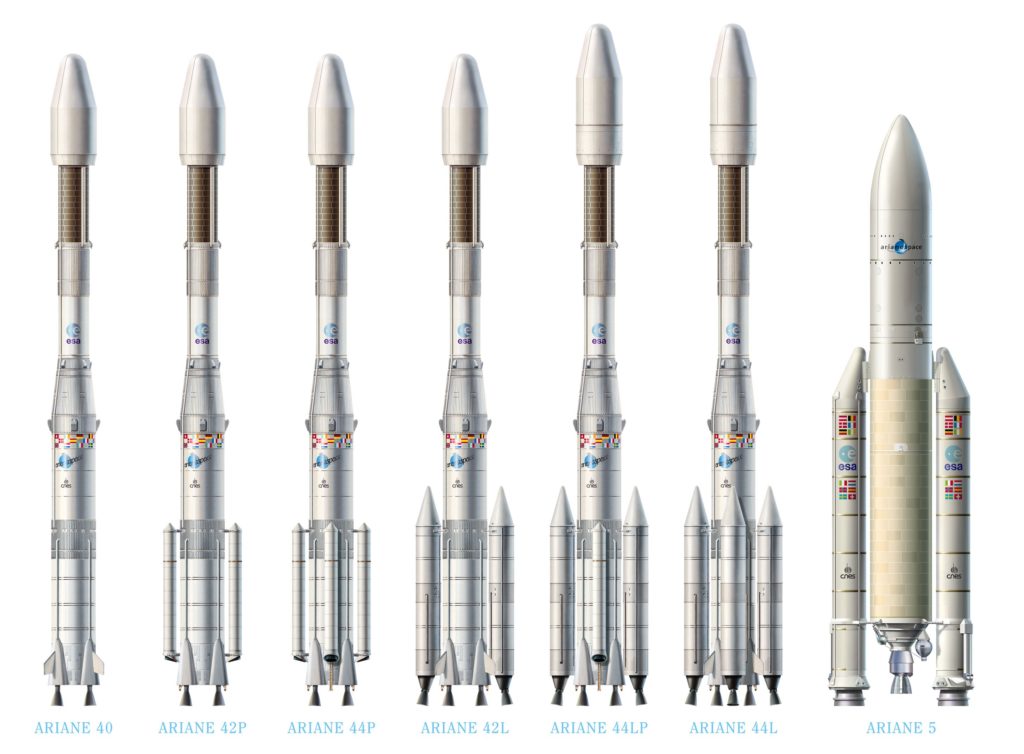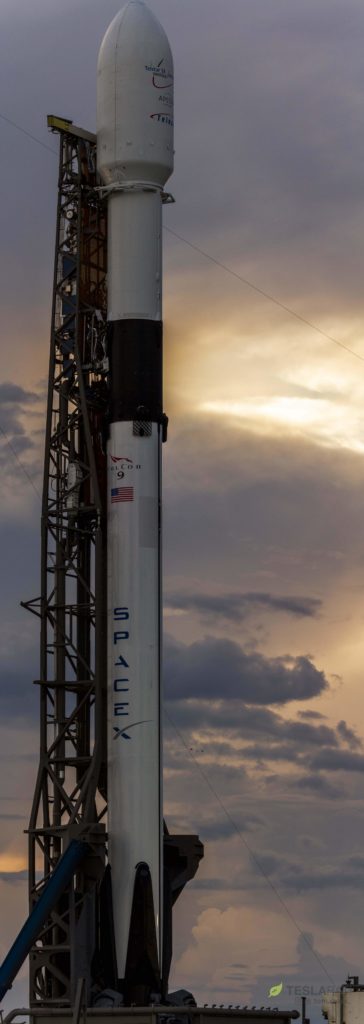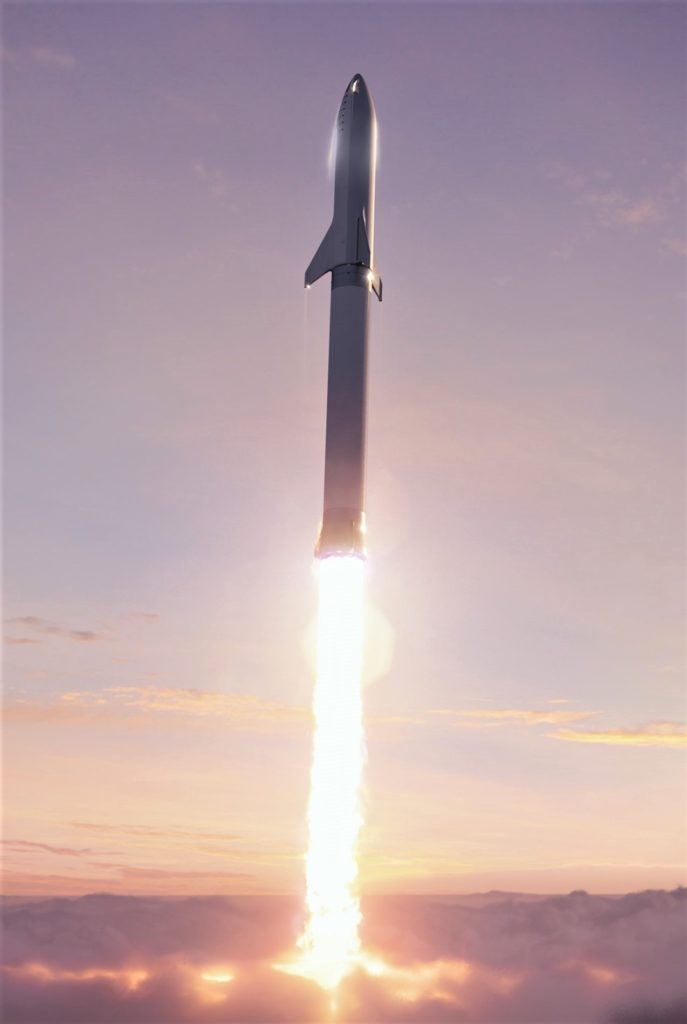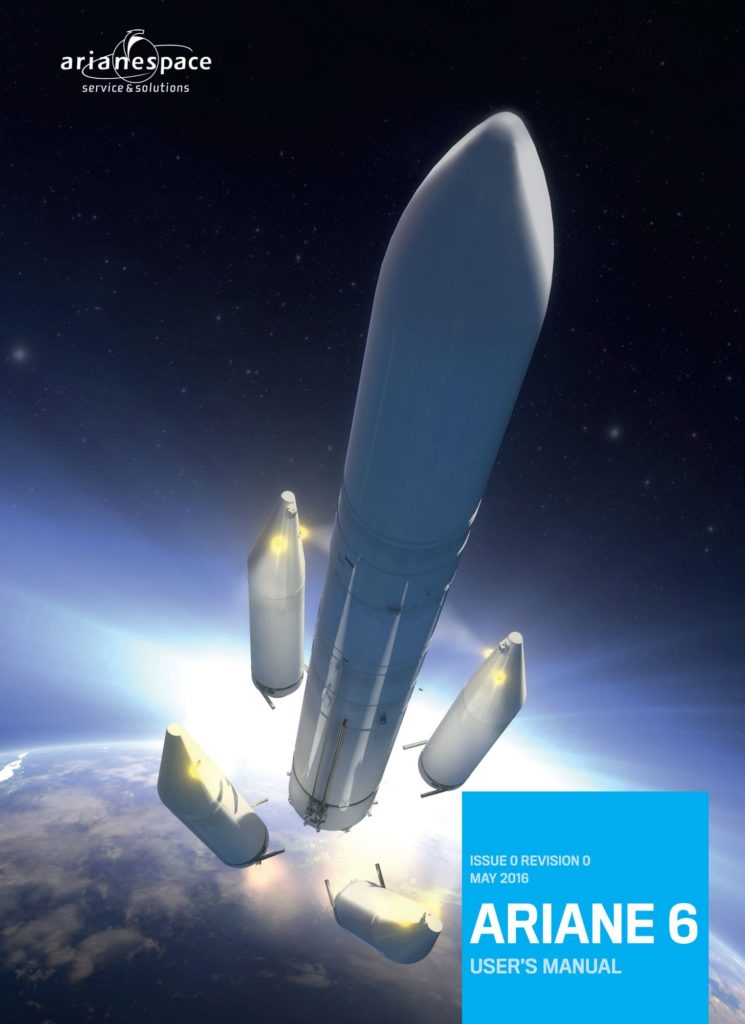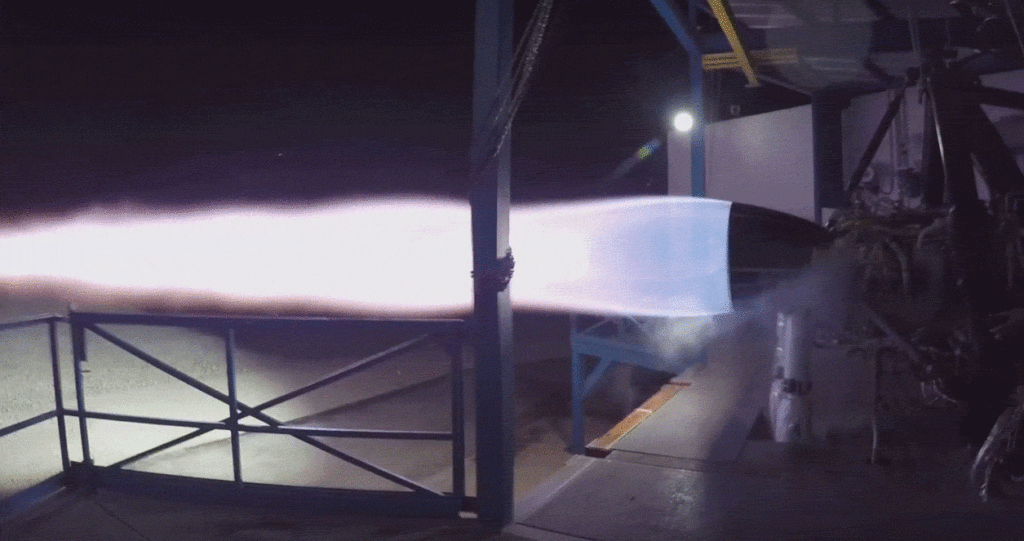
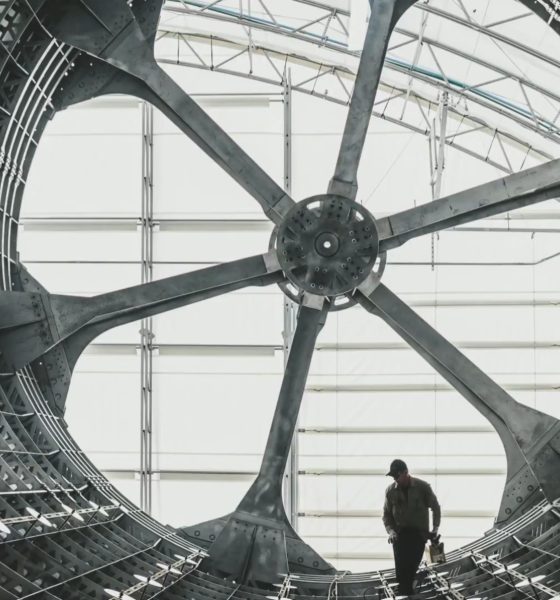
News
SpaceX’s BFR and Raptor deemed “science-fiction” by French space agency manager
Speaking in a September 7th interview with French newspaper Courrier International, Dr. Francis Rocard – director of French space agency CNES’ solar system exploration program – had little good to say about SpaceX and CEO Elon Musk’s long-term ambitions in space, going so far as to question the CEO’s driving ethics and label the company’s next-generation rocket and propulsion system “science-fiction”.
- Ariane’s lineage. (ESA)
- Ariane 62 and 64. (ESA)
- Falcon 9 Block 5 will be absolutely critical to the success (and even the basic completion) of Starlink. (Tom Cross)
- BFR (2018) breaks through a cloud layer shortly after launch. (SpaceX)
Pehaps best known for its involvement in interplanetary space exploration missions like Rosetta and European launch provider Arianespace, CNES is providing a bit less than 25% of the $3.8 billion ESA is spending to develop the Ariane 6 rocket, as well as another $700m for the construction of a new launch pad and support facilities at the space agency’s French Guiana spaceport.
ArianeGroup, a public-private partnership and company, plans to begin replacing its highly successful Ariane 5 rocket with Ariane 6 as early as 2020 and is providing roughly $475 million of its own money to develop that launch vehicle. Ariane 5, which just completed its 100th successful launch on September 25th, costs between $165m and $220m (2016) per launch and is fully expendable, while Ariane 6 – also fully expendable – is targeting a slightly more practical cost between $100m and $130m per flight.
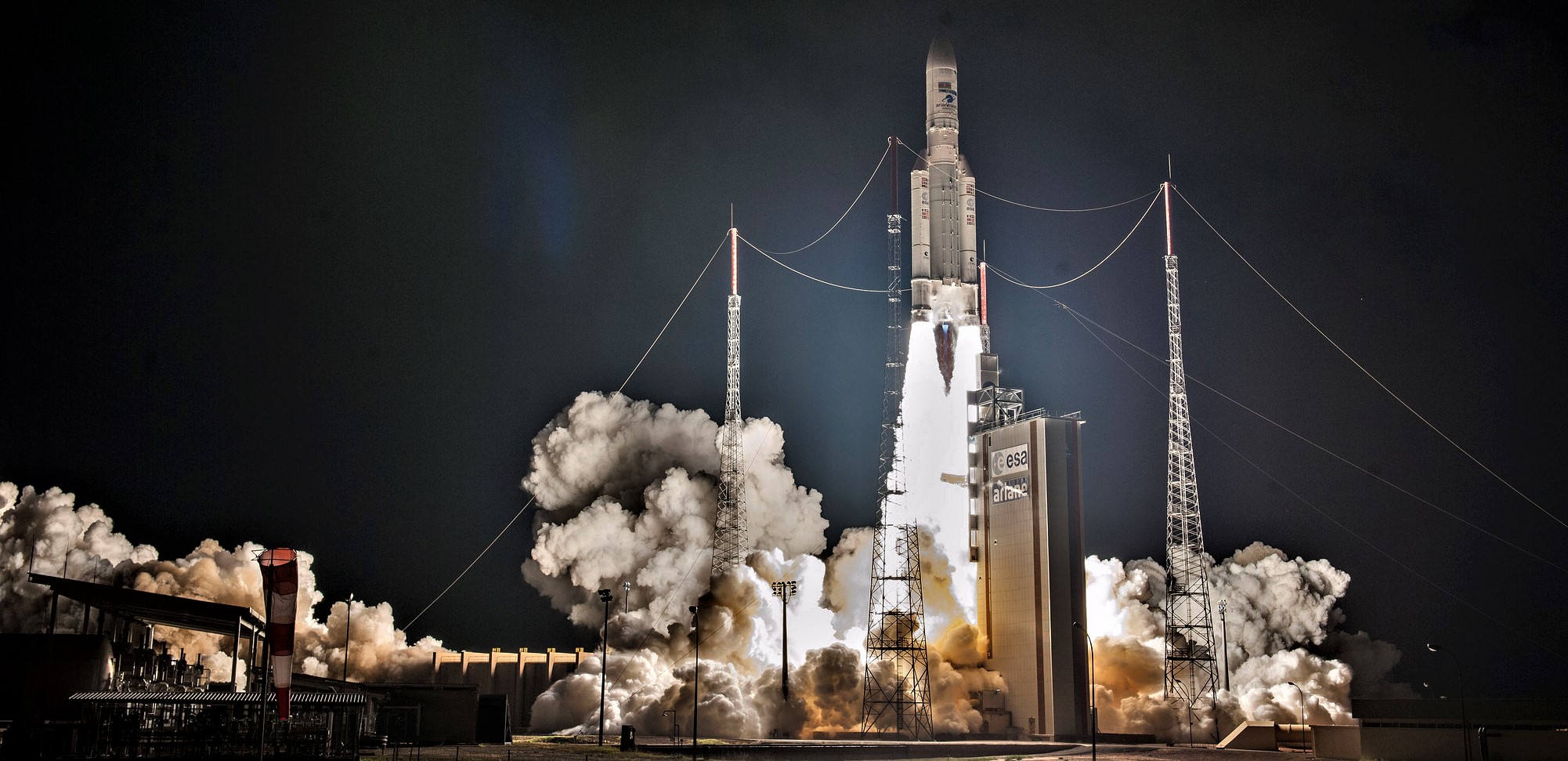
Differences between Ariane 5 and Ariane 6 are exceedingly minor, with the majority of differences found in the cost of each rocket. The end result for customers is essentially the exact same performance of Ariane 5 (or significantly worse) for at most a 40% discount. Ariane 6 will have light (2 solid rocket boosters) and heavy (4 SRBs) variants, and the light variant (known as Ariane 62) is expected to cost no more than 20% less than its heavy cousin while offering considerably less than half the performance.
This poses a major issue for ArianeGroup, as its current Ariane 5 only marginally functions as a commercial rocket thanks to an extensive reliance on dual-satellite launches, in which two different payloads are manifested on the same rocket in order to halve the cost each customer must pay. According to Arianespace, the best possible price a customer might wind up paying for one of Ariane 5’s two slots is ~$60m, essentially the same as the base price for a dedicated Falcon 9 launch. The problem, however, lies in the reality that Ariane 62 will be effectively incapable of performing the same dual-manifest launches but end up costing significantly more for a dedicated launch than the $60m-$100m Ariane 5 customers currently expect.
- This exploded view shows how Ariane 5 launches two large satellites at once. (ESA)
- A render showing Ariane 64. (Arianespace)
- A gif of Raptor throttling over the course of a 90+ second static-fire test in McGregor, Texas. (SpaceX)
- Yusaku Maezawa stands on the first BFR composite tank/fuselage section prior to his Sept. 17 announcement. (Yusaku Maezawa)
Ariane 64, at most a 40% cheaper replacement for Ariane 5, doesn’t even have a tentative launch debut date set, while Ariane 62 is pencilled in for a 2020 debut with several more launches soon after, potentially ramping up to a dozen missions per year in the mid-2020s. Rocard, while not directly involved in CNES’ own tenative work with reusable rocket experiments or its relationship with Ariane rockets, placed himself in an inopportune position by so bluntly dismissed and demeaning the near to long-term ambitions of SpaceX.
Not only are BFR and Raptor quite literally real enough to touch, but SpaceX’s Falcon 9 Block 5 is beginning to ramp up launch and reuse activities, placing the launch upstart in a position where the long-term survival – let alone success – of ArianeGroup and its Ariane 6 rockets seems no less likely than SpaceX’s realization of its Mars aspirations in the 2020s and 2030s. May the best rockets win.
For prompt updates, on-the-ground perspectives, and unique glimpses of SpaceX’s rocket recovery fleet check out our brand new LaunchPad and LandingZone newsletters!

News
Tesla FSD V14.2.1 is earning rave reviews from users in diverse conditions
Tesla’s Full Self-Driving (Supervised) software continues its rapid evolution, with the latest V14.2.1 update drawing widespread praise.

Tesla’s Full Self-Driving (Supervised) software continues its rapid evolution, with the latest V14.2.1 update drawing widespread praise for its smoother performance and smarter decision-making.
Videos and firsthand accounts from Tesla owners highlight V14.2.1 as an update that improves navigation responsiveness, sign recognition, and overall fluidity, among other things. Some drivers have even described it as “more alive than ever,” hinting at the system eventually feeling “sentient,” as Elon Musk has predicted.
FSD V14.2.1 first impressions
Early adopters are buzzing about how V14.2.1 feels less intrusive while staying vigilant. In a post shared on X, Tesla owner @LactoseLunatic described the update as a “huge leap forward,” adding that the system remains “incredibly assertive but still safe.”
Another Tesla driver, Devin Olsenn, who logged ~600 km on V14.2.1, reported no safety disengagements, with the car feeling “more alive than ever.” The Tesla owner noted that his wife now defaults to using FSD V14, as the system is already very smooth and refined.
Adverse weather and regulatory zones are testing grounds where V14.2.1 shines, at least according to testers in snow areas. Tesla watcher Sawyer Merritt shared a video of his first snowy drive on unplowed rural roads in New Hampshire, where FSD did great and erred on the side of caution. As per Merritt, FSD V14.2.1 was “extra cautious” but it performed well overall.
Sign recognition and freeway prowess
Sign recognition also seemed to show improvements with FSD V14.2.1. Longtime FSD tester Chuck Cook highlighted a clip from his upcoming first-impressions video, showcasing improved school zone behavior. “I think it read the signs better,” he observed, though in standard mode, it didn’t fully drop to 15 mph within the short timeframe. This nuance points to V14.2.1’s growing awareness of temporal rules, a step toward fewer false positives in dynamic environments.
FSD V14.2.1 also seems to excel in high-stress highway scenarios. Fellow FSD tester @BLKMDL3 posted a video of FSD V14.2.1 managing a multi-lane freeway closure due to a police chase-related accident. “Perfectly handles all lanes of the freeway merging into one,” the Tesla owner noted in his post on X.
FSD V14.2.1 was released on Thanksgiving, much to the pleasant surprise of Tesla owners. The update’s release notes are almost identical to the system’s previous iteration, save for one line item read, “Camera visibility can lead to increased attention monitoring sensitivity.”
News
Tesla FSD Supervised ride-alongs in Europe begin in Italy, France, and Germany
The program allows the public to hop in as a non-driving observer to witness FSD navigate urban streets firsthand.

Tesla has kicked off passenger ride-alongs for Full Self-Driving (Supervised) in Italy, France and Germany. The program allows the public to hop in as a non-driving observer to witness FSD navigate urban streets firsthand.
The program, detailed on Tesla’s event pages, arrives ahead of a potential early 2026 Dutch regulatory approval that could unlock a potential EU-wide rollout for FSD.
Hands-Off Demos
Tesla’s ride-along invites participants to “ride along in the passenger seat to experience how it handles real-world traffic & the most stressful parts of daily driving, making the roads safer for all,” as per the company’s announcement on X through its official Tesla Europe & Middle East account.
Sign-ups via localized pages offer free slots through December, with Tesla teams piloting vehicles through city streets, roundabouts and highways.
“Be one of the first to experience Full Self-Driving (Supervised) from the passenger seat. Our team will take you along as a passenger and show you how Full Self-Driving (Supervised) works under real-world road conditions,” Tesla wrote. “Discover how it reacts to live traffic and masters the most stressful parts of driving to make the roads safer for you and others. Come join us to learn how we are moving closer to a fully autonomous future.”
Building trust towards an FSD Unsupervised rollout
Tesla’s FSD (Supervised) ride-alongs could be an effective tool to build trust and get regular car buyers and commuters used to the idea of vehicles driving themselves. By seating riders shotgun, Tesla could provide participants with a front row seat to the bleeding edge of consumer-grade driverless systems.
FSD (Supervised) has already been rolled out to several countries, such as the United States, Canada, Australia, New Zealand, and partially in China. So far, FSD (Supervised) has been received positively by drivers, as it really makes driving tasks and long trips significantly easier and more pleasant.
FSD is a key safety feature as well, which became all too evident when a Tesla driving on FSD was hit by what seemed to be a meteorite in Australia. The vehicle moved safely despite the impact, though the same would likely not be true had the car been driven manually.
News
Swedish union rep pissed that Tesla is working around a postal blockade they started
Tesla Sweden is now using dozens of private residences as a way to obtain license plates for its vehicles.

Two years into their postal blockade, Swedish unions are outraged that Tesla is still able to provide its customers’ vehicles with valid plates through various clever workarounds.
Seko chairman Gabriella Lavecchia called it “embarrassing” that the world’s largest EV maker, owned by CEO Elon Musk, refuses to simply roll over and accept the unions’ demands.
Unions shocked Tesla won’t just roll over and surrender
The postal unions’ blockade began in November 2023 when Seko and IF Metall-linked unions stopped all mail to Tesla sites to force a collective agreement. License plates for Tesla vehicles instantly became the perfect pressure point, as noted in a Dagens Arbete report.
Tesla responded by implementing initiatives to work around the blockades. A recent investigation from Arbetet revealed that Tesla Sweden is now using dozens of private residences, including one employee’s parents’ house in Trångsund and a customer-relations staffer’s home in Vårby, as a way to obtain license plates for its vehicles.
Seko chairman Gabriella Lavecchia is not pleased that Tesla Sweden is working around the unions’ efforts yet again. “It is embarrassing that one of the world’s largest car companies, owned by one of the world’s richest people, has sunk this low,” she told the outlet. “Unfortunately, it is completely frivolous that such a large company conducts business in this way.”
Two years on and plates are still being received
The Swedish Transport Agency has confirmed Tesla is still using several different workarounds to overcome the unions’ blockades.
As noted by DA, Tesla Sweden previously used different addresses to receive its license plates. At one point, the electric vehicle maker used addresses for car care shops. Tesla Sweden reportedly used this strategy in Östermalm in Stockholm, as well as in Norrköping and Gothenburg.
Another strategy that Tesla Sweden reportedly implemented involved replacement plates being ordered by private individuals when vehicles change hands from Tesla to car buyers. There have also been cases where the police have reportedly issued temporary plates to Tesla vehicles.
